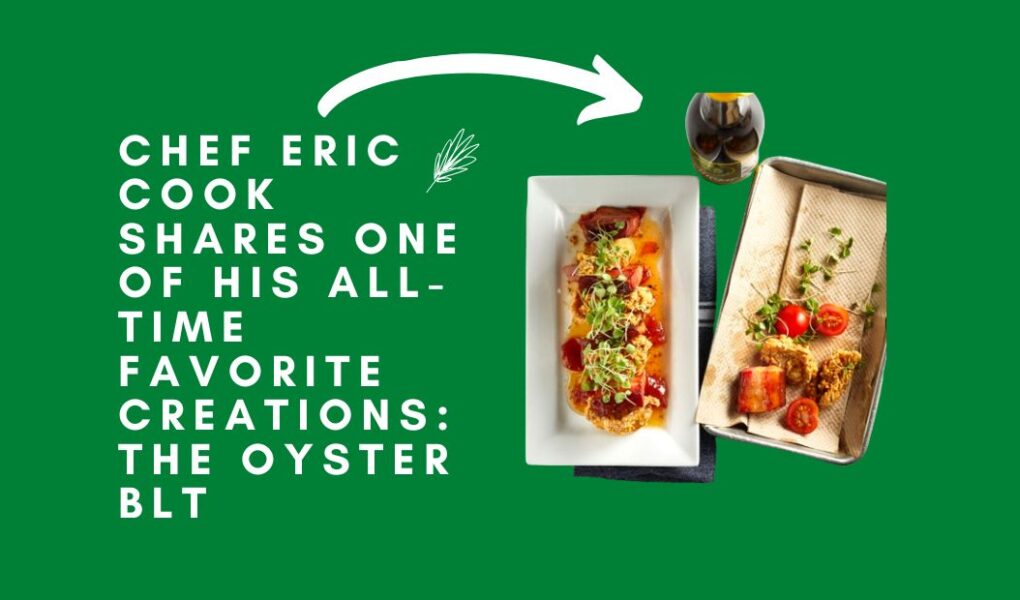Introduction
When it comes to reinventing classic dishes, few chefs can match the creativity and expertise of Chef Eric Cook. A New Orleans native and celebrated culinary figure, Cook has transformed the traditional BLT into a unique and irresistible dish that has quickly become a favorite among food enthusiasts. The Oyster BLT, a signature creation of Cook, exemplifies his ability to merge familiar flavors with innovative twists, all while staying true to the rich culinary heritage of New Orleans.
In this article, we’ll dive into the details of Chef Eric Cook’s Oyster BLT, explore the inspiration behind the dish, break down its key components, and provide a step-by-step guide to recreating this masterpiece at home. Whether you’re a seasoned chef or a home cook looking to impress your guests, this guide will give you everything you need to know about one of Chef Cook’s most iconic creations.
The Inspiration Behind the Oyster BLT
Chef Eric Cook’s culinary journey is as rich and diverse as the flavors in his dishes. Before opening his popular New Orleans restaurants, Gris-Gris and Saint John, Cook served as the executive chef at the National WWII Museum’s American Sector. It was during this time that he conceptualized the Oyster BLT, drawing inspiration from a po’ boy he had once enjoyed that featured bacon and oysters.
By leveraging the proven flavor combination of the BLT—salty, sweet, acidic, and peppery—Cook was able to create a dish that was both innovative and approachable. He decided to move away from the traditional bread and instead focused on showcasing the key ingredients in a new light, turning the BLT into a standout bar bite and appetizer.
Key Components of the Oyster BLT
The Oyster BLT is a sophisticated reimagining of the classic sandwich, featuring a blend of textures and flavors that elevate it to new heights. Here’s a breakdown of the key components that make this dish so special:
- Fried Gulf Oysters: Gulf oysters are battered with masa corn flour and seasoned with Dickie Brennan’s custom Creole seasoning. The oysters are fried until they’re crispy on the outside, yet tender and juicy on the inside.
- Tomato Jam: Made from locally grown cherry tomatoes, this sweet and vinegary jam adds a burst of flavor that perfectly complements the rich pork belly and briny oysters.
- Pork Belly: Cured and smoked pork belly replaces the traditional bacon, offering a deeper, smokier flavor and a rich, satisfying texture.
- Micro Arugula: Dressed with Louisiana sugarcane vinegar, salt, and pepper, the micro arugula adds a fresh, peppery bite that cuts through the richness of the other components.
- Creole Seasoning: A custom blend of spices that adds a distinctive New Orleans flair to the dish.
Step-by-Step Guide to Making the Oyster BLT
Ready to try your hand at making Chef Eric Cook’s Oyster BLT at home? Follow these steps to create a dish that’s sure to impress:
1. Prepare the Seafood Dredge
- Ingredients:
- 2 cups all-purpose flour
- 1 cup yellow cornmeal
- ¼ cup Creole seasoning
- Instructions:
- In a large bowl, combine the flour, cornmeal, and Creole seasoning. Mix well.
- Store the dredge in an airtight container at room temperature for up to 4 weeks.
2. Make the Tomato Jam
- Ingredients:
- 2 pints cherry tomatoes
- 3 medium vine-ripened tomatoes, diced
- ½ cup Steen’s cane vinegar
- 2 cups light Karo corn syrup
- 2 tsp. kosher salt
- 1 tbsp. black pepper
- Instructions:
- In a saucepan, combine the tomatoes, vinegar, corn syrup, salt, and pepper.
- Cook over low heat until the mixture has fully broken down and reduced by one-third to achieve a jam-like consistency.
- Store the jam in the refrigerator for up to 14 days.
3. Cook the Pork Belly
- Ingredients:
- 1 (8 oz.) slab of pork belly, sliced into 24 pieces, each measuring 2 inches square and ½ inch thick.
- Instructions:
- In a 12-inch cast-iron skillet set over medium heat, cook the pork belly slices for 5 to 7 minutes per side until they’re crispy and golden brown.
- Set the pork belly aside to drain on paper towels.
4. Prepare the Fried Oysters
- Ingredients:
- 2 egg whites
- 1 quart oysters, drained
- Instructions:
- Pour the egg whites into a bowl and whisk until frothy.
- Add the oysters to the bowl with the egg whites, stirring gently until they are evenly coated. Refrigerate for 15 minutes.
- Strain the oysters from the egg whites and coat them in the seafood dredge, shaking off any excess.
- Heat oil to 350°F in a deep fryer or Dutch oven.
- Fry the oysters in batches for 2 to 3 minutes until golden brown. Drain on paper towels.
5. Assemble the Oyster BLT
- Ingredients:
- Tomato jam
- Fried oysters
- Pork belly
- Micro arugula

-
Instructions:
- Spread tomato jam on a small plate.
- Arrange 4 fried oysters and 4 pieces of pork belly in alternating layers over the tomato jam.
- Top with micro arugula dressed with Louisiana sugarcane vinegar, salt, and pepper.
Table: Comparison Between Traditional BLT and Chef Cook’s Oyster BLT
| Component | Traditional BLT | Chef Cook’s Oyster BLT |
| Protein | Bacon | Cured and smoked pork belly, fried oysters |
| Bread | Toasted sandwich bread | None |
| Lettuce | Romaine or iceberg lettuce | Micro arugula dressed with sugarcane vinegar |
| Tomato | Sliced tomatoes | Sweet and vinegary tomato jam |
| Seasoning | Salt and pepper | Custom Creole seasoning |
| Cooking Method | Simple assembly | Frying, curing, and jam preparation |
FAQ Section
What makes the Oyster BLT different from a traditional BLT?
The Oyster BLT differs from the traditional BLT in several ways. Instead of bacon, it features cured and smoked pork belly. Fried oysters add a unique briny and crunchy texture, while micro arugula replaces lettuce, offering a peppery bite. The use of tomato jam instead of sliced tomatoes brings a sweet and tangy flavor profile.
Can I use regular bacon instead of pork belly?
While you can use regular bacon, pork belly offers a richer, smokier flavor and a more substantial texture. If you prefer a closer resemblance to the traditional BLT, bacon is a suitable alternative.
Is the Oyster BLT difficult to make at home?
The Oyster BLT does require several steps, including making the tomato jam, cooking the pork belly, and frying the oysters. However, the steps are straightforward, and with a bit of preparation, it’s an achievable dish for home cooks.
What is Creole seasoning, and where can I find it?
Creole seasoning is a blend of spices commonly used in Louisiana cooking. It typically includes paprika, garlic powder, onion powder, cayenne pepper, black pepper, and oregano. You can find it in most grocery stores or make your own blend at home.
How can I serve the Oyster BLT?
The Oyster BLT can be served as an appetizer, a main course, or even adapted into a po’ boy sandwich. It’s versatile and pairs well with a variety of sides, such as fries, coleslaw, or a simple green salad.
Conclusion
Chef Eric Cook’s Oyster BLT is a culinary masterpiece that captures the essence of New Orleans cuisine while offering a fresh take on a classic dish. By deconstructing the traditional BLT and introducing elements like fried oysters, pork belly, and tomato jam, Cook has created a dish that is both innovative and deeply rooted in the flavors of his hometown.
Whether you’re looking to impress guests at a dinner party or simply want to experience the flavors of New Orleans in your own kitchen, the Oyster BLT is a dish worth trying. With its rich combination of textures and flavors, it’s no wonder that this dish has become one of the top sellers at Bourbon House and a favorite among Chef Cook’s creations.
By following the steps outlined in this article, you can recreate Chef Cook’s Oyster BLT at home and enjoy a taste of New Orleans, no matter where you are.




